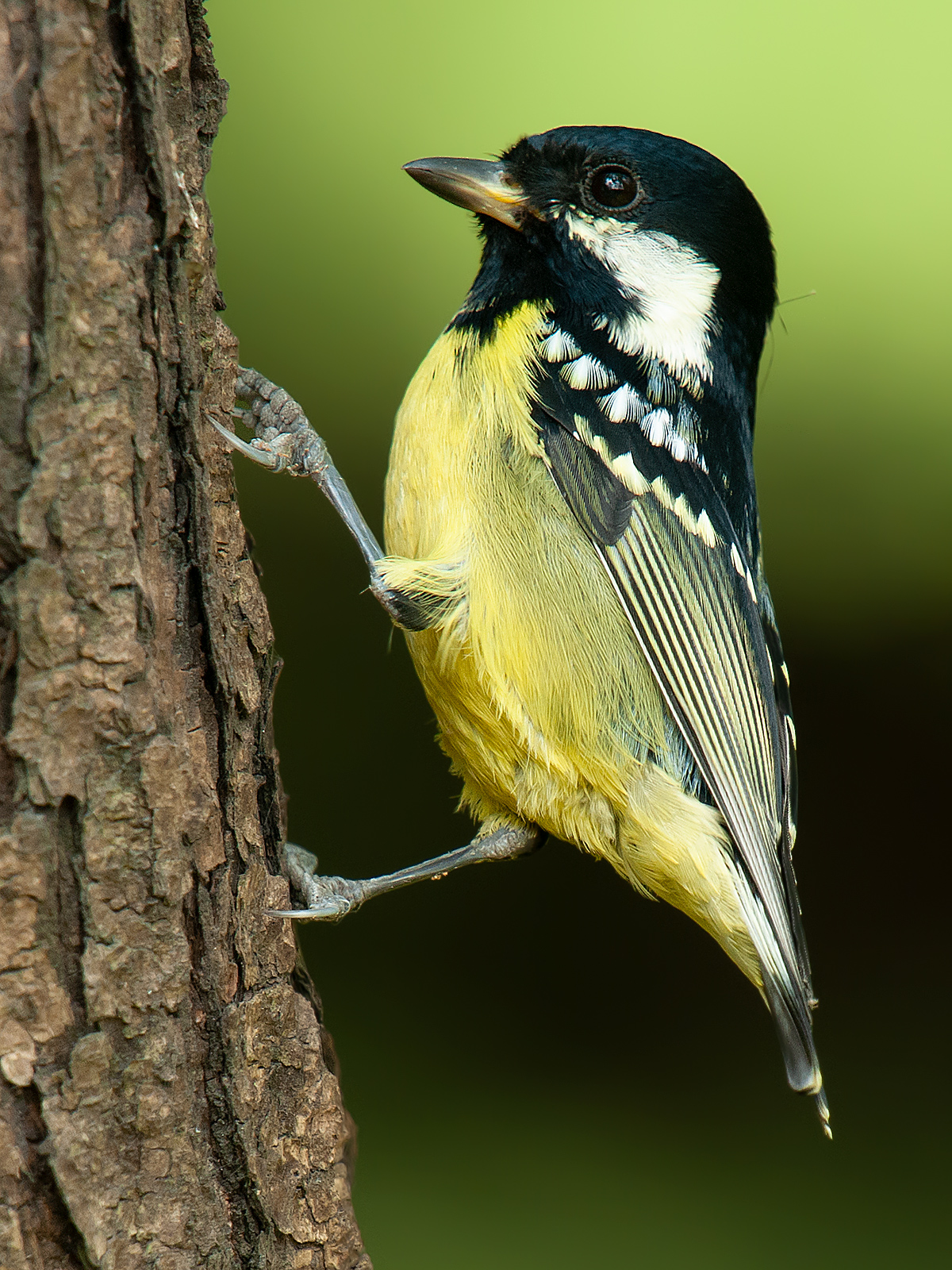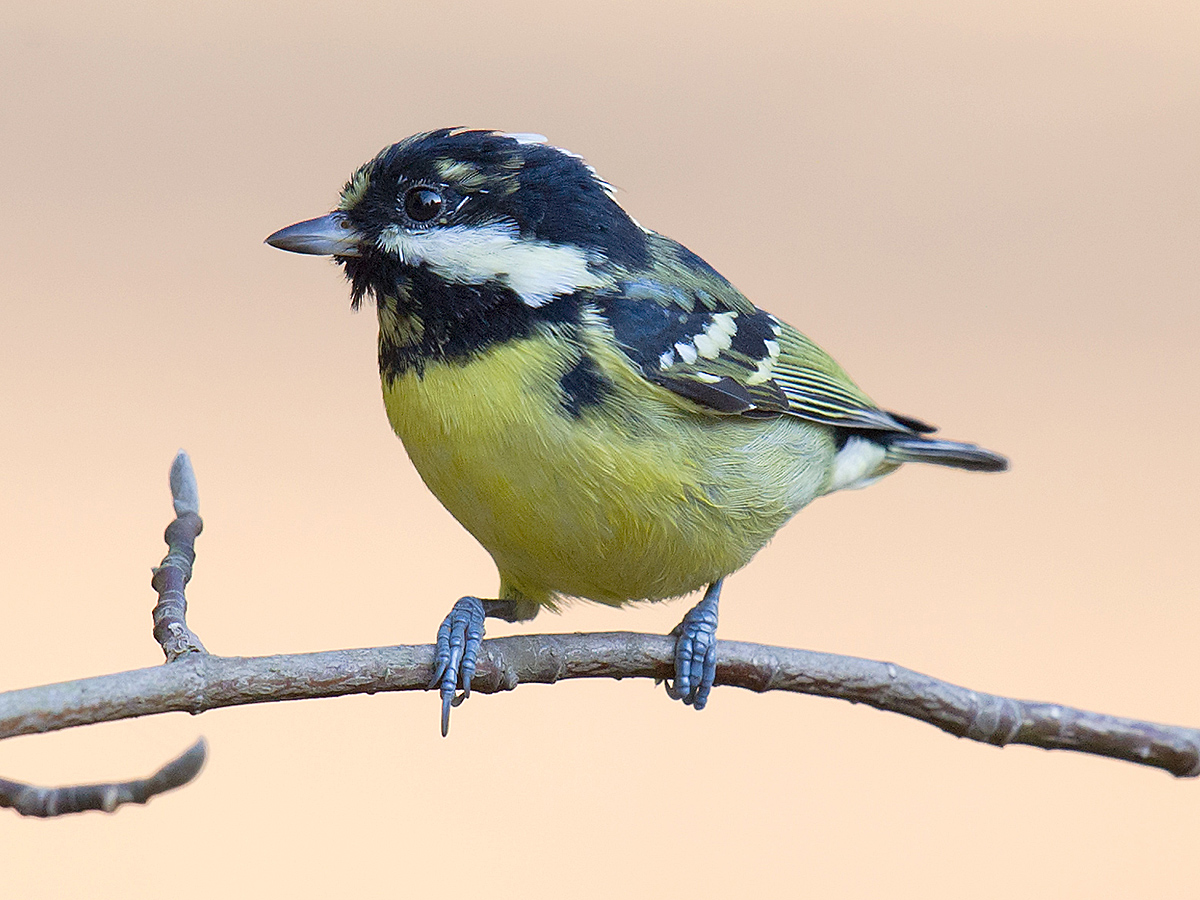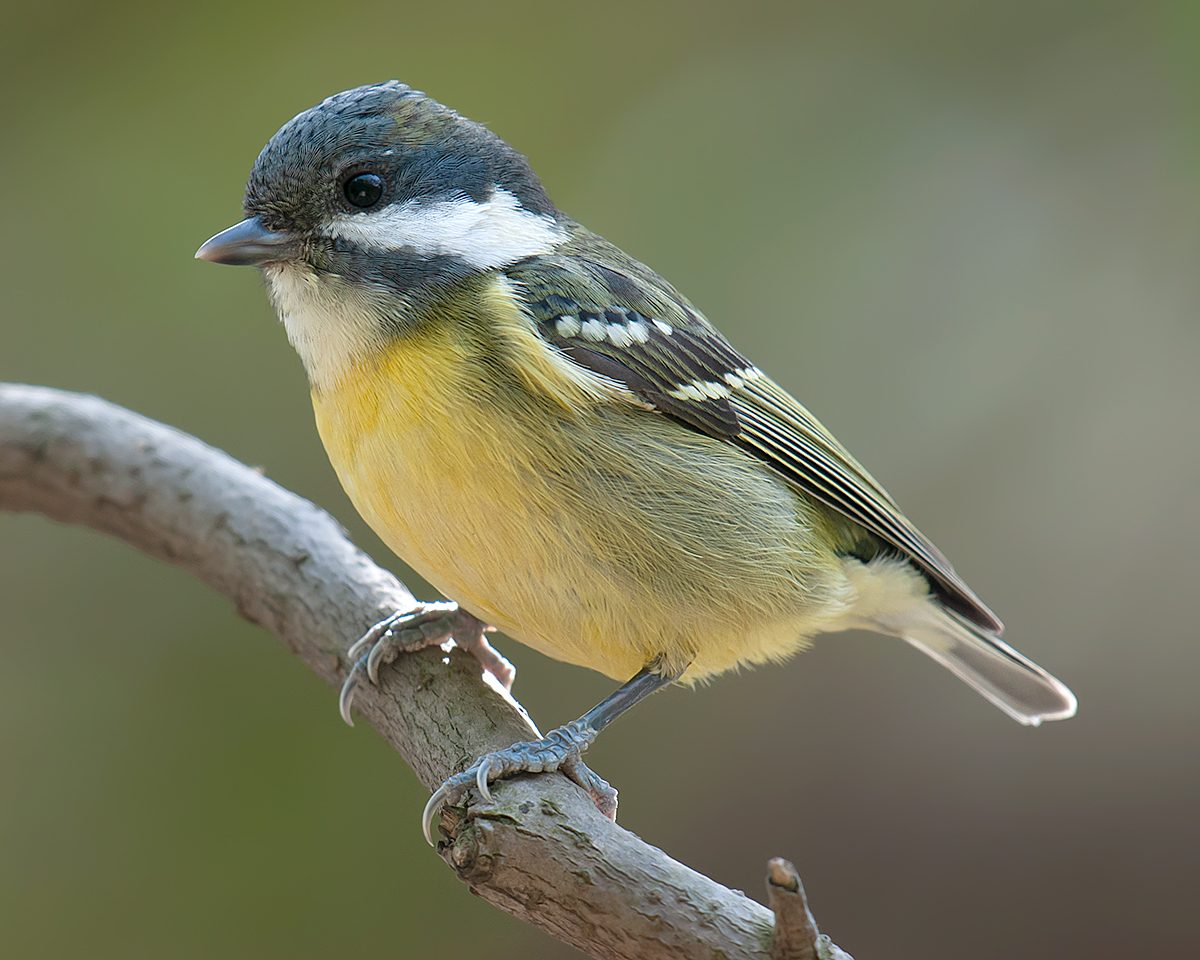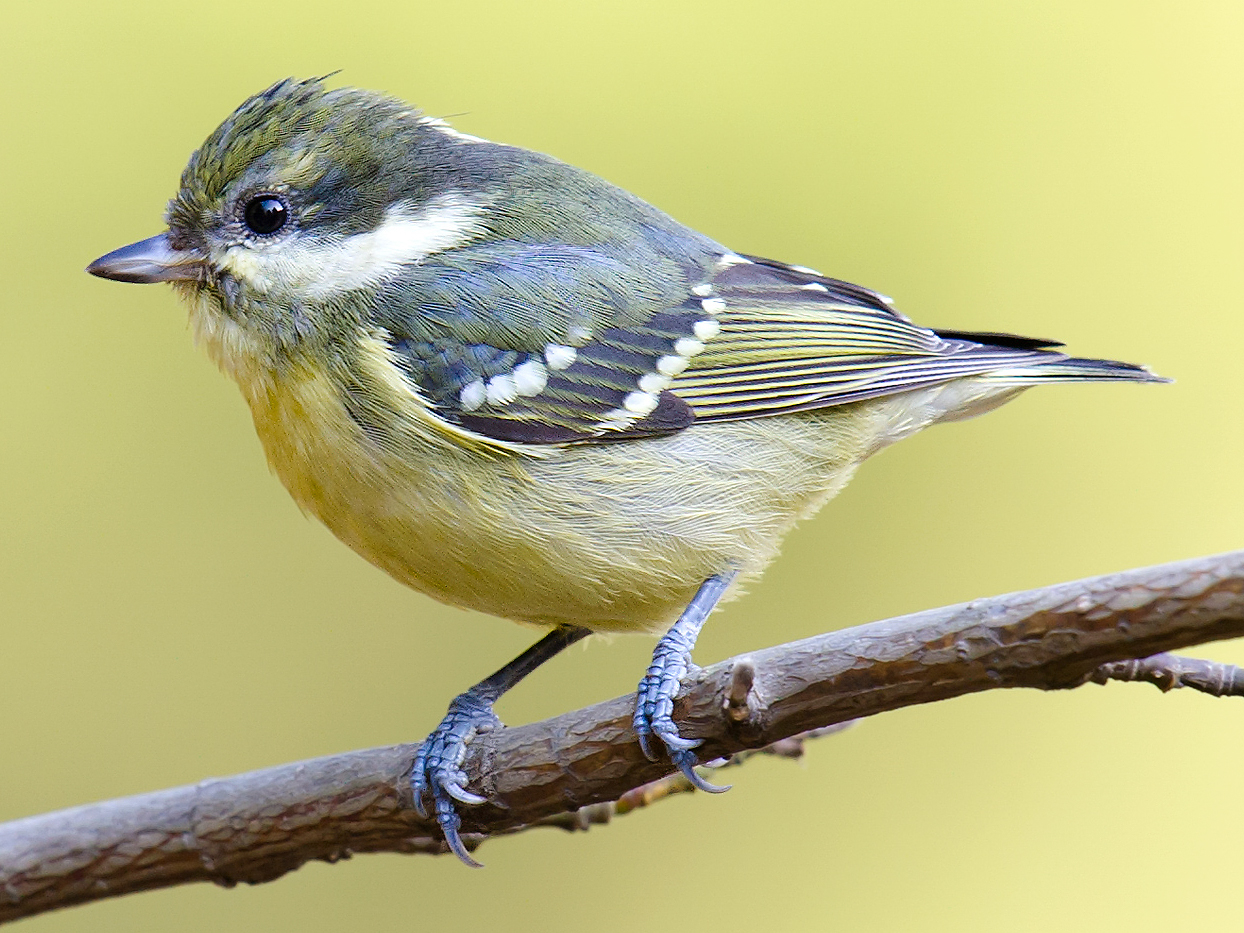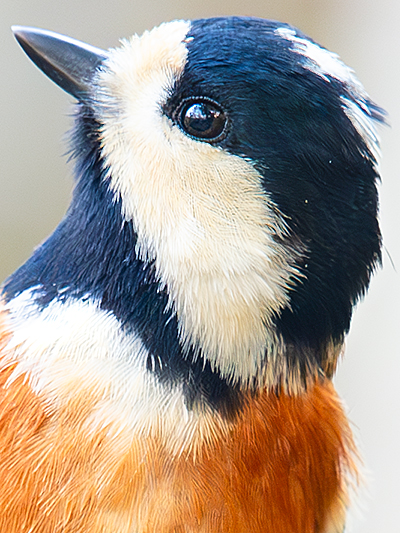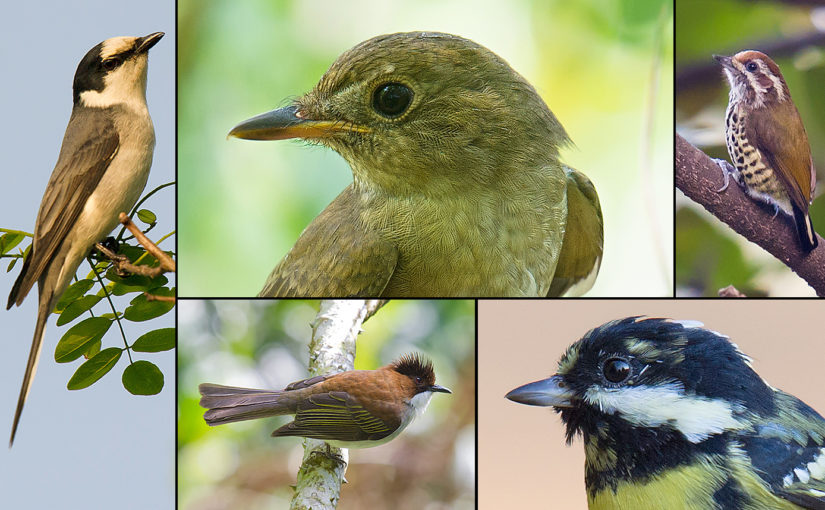by Steven Bonta
for shanghaibirding.com

Western Shanghai, especially the Qingpu and Songjiang districts, offers a birding experience highly different from that of coastal Shanghai. Some of the species in western Shanghai are rarely seen on the coast and are more typical of interior southeast China. Here, in remnant wetlands and wooded areas, can be found Brown-chested Jungle Flycatcher, Orange-bellied Leafbird, and Cotton Pygmy Goose. As a resident of Qingpu District living only a few kilometers from the borders of Jiangsu and Zhejiang, I have explored western Shanghai extensively. Read on to see what I have learned.
TIANMA MOUNTAIN
Tianma Mountain (31.058926, 121.141957) is part of a chain of low, forested hills in western Shanghai that includes nearby Sheshan (see below). Tianma has the best forest in Shanghai and, aside from Cape Nanhui, may be Shanghai’s most exciting birding locale. Unlike the wooded areas in the large urban parks, Tianma Mountain’s woods are pristine, with many large trees, heavy underbrush, and abundant habitat for birds. The mountain is about a kilometer from end to end, with a network of well-maintained trails, and is surrounded by a narrow road that is also very much worth birding. A couple of other smaller forested hills are adjacent to the main mountain, affording a nice wooded corridor for the birds to move about.
Because of its unique habitat and southwesterly location, Tianma has more potential than anywhere else in Shanghai for attracting birds typical of the forests of southeastern China. Brown-chested Jungle Flycatcher (which may breed at Tianma), Orange-bellied Leafbird, and Chestnut Bulbul have been found there; others no doubt await discovery. Birding the rice fields, canals, and secondary woods surrounding Tianma can also be rewarding. In a few hours, a good birder can easily find 30 to 40 species at Tianma and the adjacent countryside.
The best birding is on the mountain. Tianma has Shanghai’s best numbers of Silver-throated Bushtit and Black-throated Bushtit, both of which can normally be found in flocks there. Swinhoe’s White-eye are also abundant any time of year, and along with tits, bushtits, and leaf warblers, predominate in bird waves. In winter large numbers of Yellow-bellied Tit congregate here, and Hawfinch seem to be more reliable here than elsewhere in Shanghai (except for nearby Sheshan). Large numbers of thrushes, especially Dusky Thrush, Grey-backed Thrush, and White’s Thrush, also winter here, but, unlike at Century Park, they tend to congregate well off the main trails and may be hard to see. Tristram’s Bunting is another reliable winter resident, along with the somewhat less common Yellow-throated Bunting. Common Rosefinch have wintered at Tianma, and there is a small resident population of Red-billed Leiothrix. Another exciting and common bird at Tianma, especially in the wintertime, is Crested Goshawk. Both here and at Sheshan, these birds are often tame and approachable Among the rarer birds typical of the forests west and south of Shanghai that have been found at Tianma are Grey Treepie and Chinese Bamboo Partridge. Tianma even attracts mega-rarities, such as the several Ryukyu Minivet that in the winter of 2020-21 spent at least two months at Tianma.
Early spring at Tianma Mountain can yield surprises, especially when the cherries are in bloom. At this time, significant numbers of Chestnut Bulbul, as well as a few Collared Finchbill, move into the area to feed. I have observed Orange-bellied Leafbird there at this time of year. The best place to find such birds is in the garden area inside the east gate. Other birds present during migration are Ashy Minivet, Forest Wagtail, Speckled Piculet, and Grey-streaked Flycatcher.
The surrounding fields and canals can also be productive, since the entire area is comparatively rural. In the adjacent waterways and wetlands, I have found a surprising range of birds, among them Pied Kingfisher.
Tianma Mountain is best accessed by car or taxi. You will get the best results by hiking around and up the mountain. Exploring the small foot trails created to give access to the fire hydrants hidden among the trees will get you away from noisy groups on the main trails, and probably allow you to see birds too shy to be visible from well-trafficked areas.
SHESHAN
Sheshan (31.0954136, 121.1946608) is Tianma Mountain’s noisier, more touristy sibling. Located 6 km (4 mi.) northeast of Tianma, Sheshan (actually two separate mountains) is not as birdy as Tianma, but it can yield many nice birds, including Crested Goshawk (usually in the forests on the west side of the western hill, below the Catholic church and observatory; I have observed pairs of these birds at Sheshan, and they are frequently approachable). A large population of Red-billed Leiothrix makes this attractive species easy to spot on Sheshan, along with good numbers of Chinese Hwamei. A few Greater Necklaced Laughingthrush also make their home in the dense bamboo stands, and can sometimes be seen in the company of more conspicuous leiothrixes. The best birding is in the dense thickets around the Catholic shrine plaza and on the western side of the west hill. The east hill is also well-forested but seems to be less birdy. Sheshan is normally more crowded than Tianma, perhaps because it is more accessible and is free of charge.
DIANSHANHU SCENIC AREA
At the far western tip of Shanghai is a wooded peninsula jutting up along the western edge of Dianshan Lake. This is Dianshanhu Scenic Area (31.072524, 120.910850). The lake itself does not offer exceptional birdlife, except for large flocks of Whiskered Tern in the spring. But the wooded areas here, especially in the large garden and park area around the big pagoda (free admission), are worth a visit, especially in the spring. As at Tianma Mountain, Dianshanhu Scenic Area is usually buzzing with Swinhoe’s White-eye, and Black-throated Bushtit and Yellow-bellied Tit are common. Brown-flanked Bush Warbler are also found here. Perhaps of greatest interest are the large numbers of Collared Finchbill that invade this spot from the west and south in the spring. When the cherries and other trees are in bloom, this bulbul, normally rare in Shanghai, can be found in appreciable numbers here. The heavily wooded islands nearby, accessible by a stepping-stone bridge, can yield other surprises.
Like Tianma, Dianshanhu is not easily accessible. For birders living in downtown Shanghai without a car, the best route is to take Line 17 to Oriental Land (the last stop), and then go by taxi to Dianshanhu.
QINGXI COUNTRY PARK (DALIAN LAKE)
This is western Shanghai’s best wetland, but it is surprisingly difficult to access, and very crowded on weekends. Private vehicles are not allowed in the park, which means that birders must park outside and walk in (more than a kilometer to reach the lake). However, the park is clogged with beeping tour buses and tourist transport vehicles, as well as throngs of visitors. A large food concession area at the entrance caters to the park’s many visitors. Birders here should have a tolerance for noisy, distracting crowds. That said, Qingxi Country Park can be very rewarding. At the time of this writing, Dalian Lake is western Shanghai’s top eBird hotspot, and with good reason: the lake is relatively pristine and surrounded by some fairly well-protected wetlands. Some daily tallies on eBird for this site exceed 50 species.
The two best-known birds found here in spring and summer are Cotton Pygmy Goose and Pheasant-tailed Jacana. Cotton Pygmy Goose are not recorded every year; I have observed them in small groups. Pheasant-tailed Jacana is an annual breeder, and Dalian Lake may be the most reliable place in Shanghai to see them. Both the jacanas and pygmy geese may be seen in May and June on the many lotus and lily ponds along the road in from the main parking lot at the east entrance. Park or leave your taxi at the lot by the main road and walk the half kilometer to the visitor center. Just past the parking lot, the road to the visitor center, which is often plied by bicycles and tour vehicles as well as walkers, is covered by a lengthy series of very lush trellises, and jacanas and pygmy geese are often visible in the ponds on either side of the road in this area. Viewing is easier in early and mid-May, before the lotuses become so tall and dense as to blot out most views of the water.
Beyond this area, the park is chiefly noted for its huge numbers of herons and egrets. Thousands nest in the 40-year-old “water forest” of cypresses inside the park, and are usually visible in considerable numbers in muddy fields and wetlands all around the park. Passerine and shorebird migrations are not as impressive as at coastal sites, but winter tallies of buntings are worthwhile.
Western Shanghai is full of hidden surprises, pockets of wetland and woodland that have not yet been gobbled up by developers. For instance, only a few kilometers north of the bustling tourist town of Zhujiajiao in Qingpu District, the area around Shanhaiqiao Village features superb wetlands and remnant woodland patches that teem with birdlife, in a setting more reminiscent of rural interior China than urban Shanghai. A recent visit there by me netted 40 species, including several Eastern Buzzard, three Common Snipe, and a large variety of other waterbirds and passerines. Doubtless many more such spots await exploration in semi-rural western Shanghai.
PHOTOS
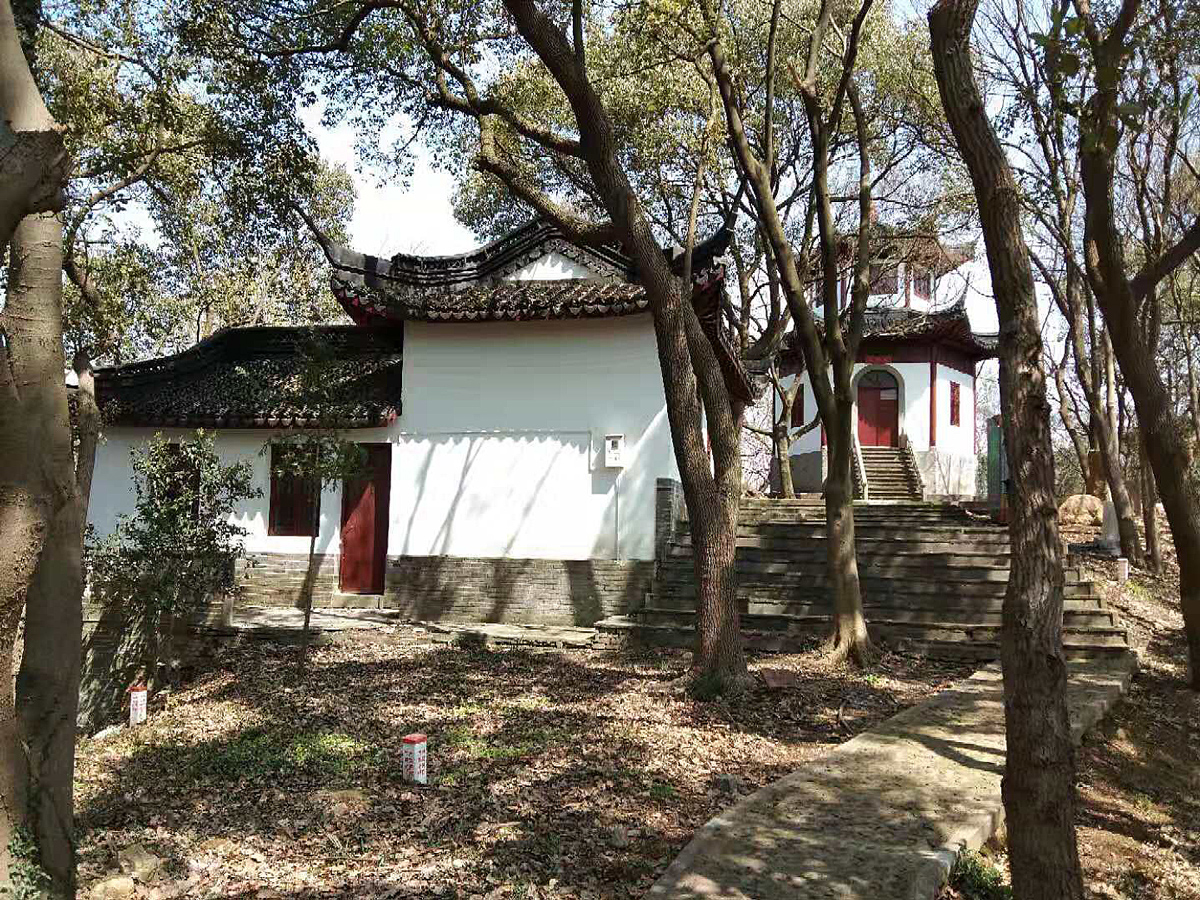
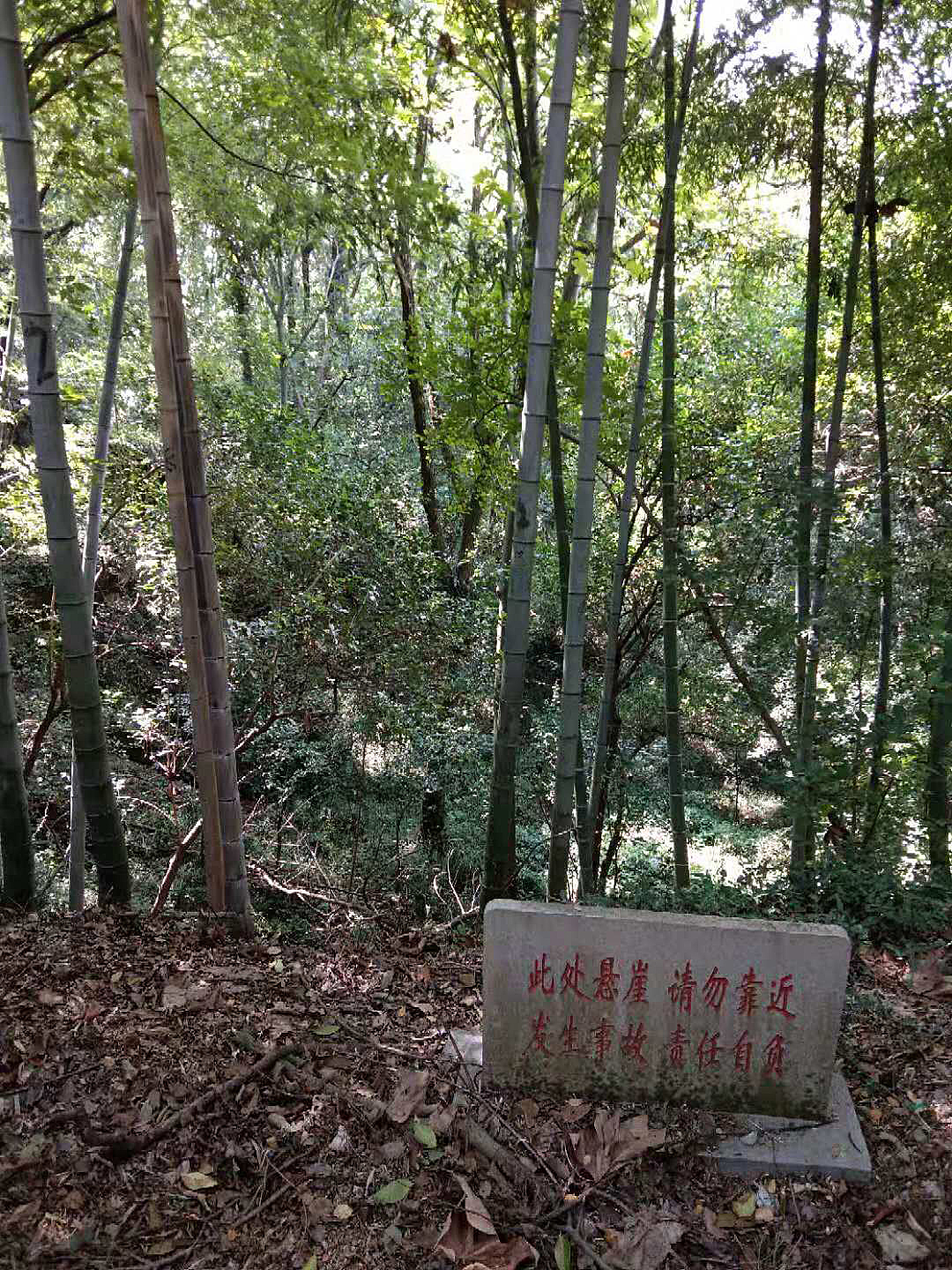
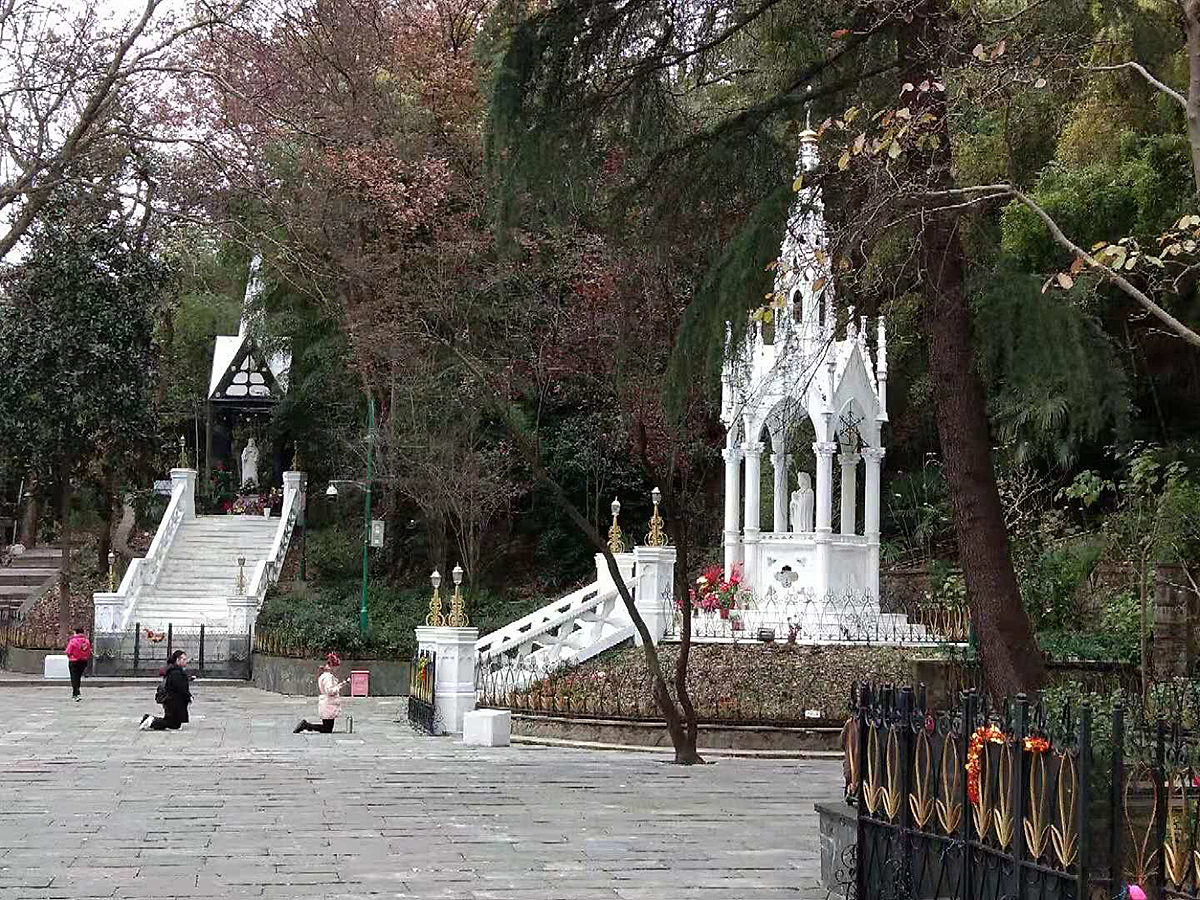
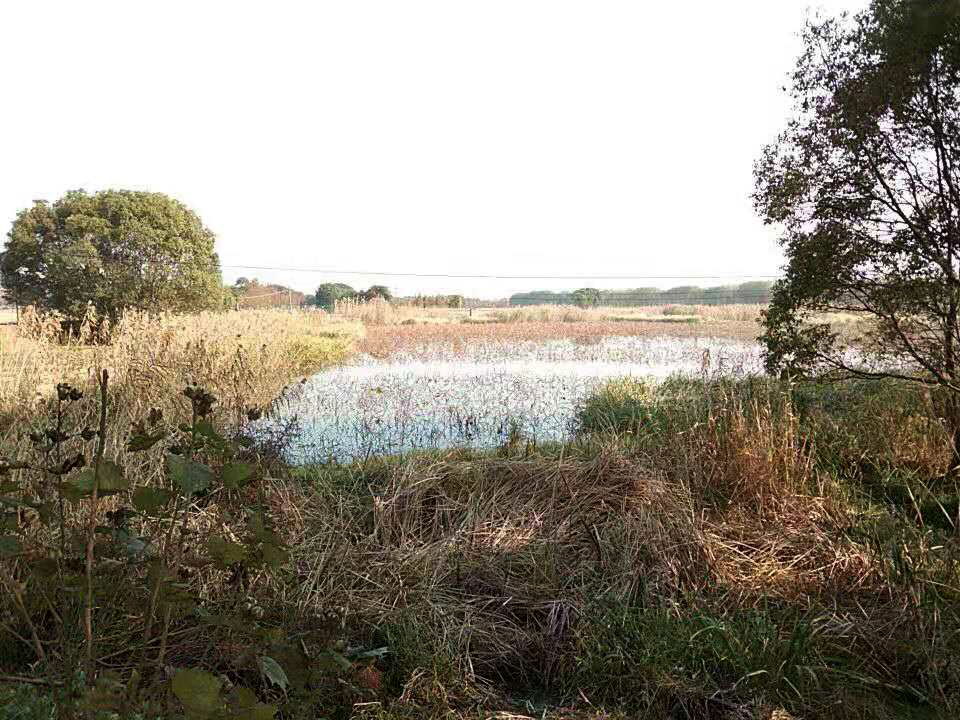
FURTHER READING
This post is part of a series on the top birding sites in Shanghai. See also
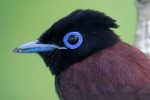
CAPE NANHUI: Even in decline, the coastal area 85 km southeast of People’s Square remains the premier birding spot in Shanghai and one of the most famous birding sites in China. The microforests at Cape Nanhui are astonishingly effective migrant traps for woodland species such as Japanese Paradise Flycatcher and Siberian Blue Robin. The wetlands offer East Asian specialties Black-faced Spoonbill and Asian Dowitcher.
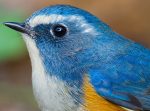
URBAN SHANGHAI: Century Park in Pudong offers excellent birding and is easily accessible on Metro Line 2. Yellow-bellied Tit, White’s Thrush, Red-flanked Bluetail, and Daurian Redstart are among the East Asian specialties commonly noted at Century and other parks in the urban center.
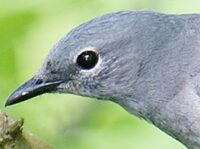
BAYSIDE NATIONAL FOREST PARK is a large park on Hangzhou Bay in Fengxian District. It is one of the largest wooded areas in Shanghai. Many species uncommon elsewhere in Shanghai, among them Grey Treepie, Black-winged Cuckooshrike, and Chestnut-winged Cuckoo, occur in the park. The bird-rich Fengxian wetlands are nearby.
REVISIONS
1. On 28 June and 2 July 2021, post revised to include mentions of more species in wake of rapid accumulation of data as result of surge in birder visits to western Shanghai.
Featured image: Birds of western Shanghai. Clockwise from L: Ashy Minivet Pericrocotus divaricatus, Brown-chested Jungle Flycatcher Cyornis brunneatus, Speckled Piculet Picumnus innominatus, Yellow-bellied Tit Pardaliparus venustulus, and Chestnut Bulbul Hemixos castanonotus. (Craig Brelsford)

